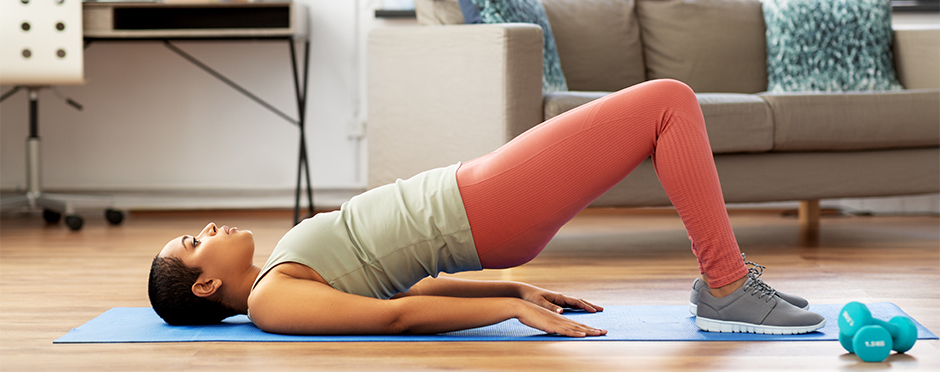
3 Ways to Manage Your Back Pain
Leave a CommentThe Athletico blog has many resources available to its readers about mitigating and finding relief for back pain. I intend to provide a few more ways to help manage back pain in this blog. This blog will give you a framework to help manage your symptoms and get some form of relief to allow you to live your life with less pain and give you a sense of self-efficacy to help manage your back pain symptoms.
1. Stay Active
Bed rest was once widely prescribed to relieve low back pain, but current evidence supports the notion of staying active to help ease back pain.1 Though some rest can be beneficial, excessive rest, or disuse, will cause muscles to atrophy (reduce in size) and cause that muscle to lose strength and endurance due to being a smaller size than it was initially.2 There is a clear dose-dependent response to hypertrophy with increasing volumes showing a more significant increase in muscle size to a certain point.3 Luckily, it doesn’t take near as much volume to maintain muscle size and strength, with as little as one set of an exercise showing the ability to maintain muscle size and strength.4 The caveat is that the exercise has to be at a high enough intensity to stimulate the recruitment of as many muscle fibers as possible (i.e., you need to get your heart rate up and have an increased effort in that one set). This will mean that you will need to make sure you stay active as you manage your back pain, even if it is just going for a walk. Just make sure that you walk briskly enough to raise your heart rate and increase your breathing frequency in response to the activity. Here are just a few back exercises that can help.
Lying Trunk Rotations and Cat/Camel
These two exercises are great for introducing some movement into the lumbar spine, the portion of the spine that makes up the low back region. Of the two, the lying trunk rotations are the easiest to perform and are often the most tolerated, being that they are performed when the person is lying on their back and rocking their legs side to side in a bent position.
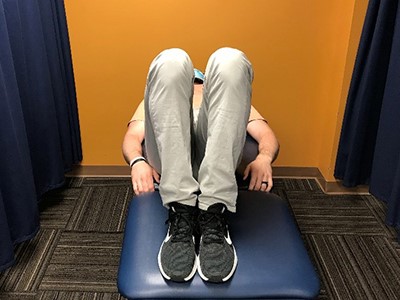
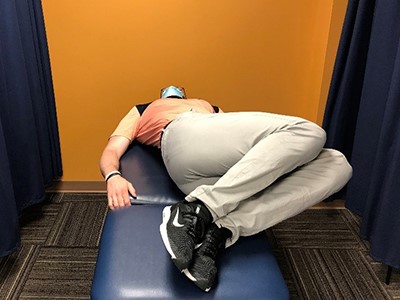
The Cat/Camel exercise is performed with a hands and knees position, alternating between arching and rounding the lumbar spine.
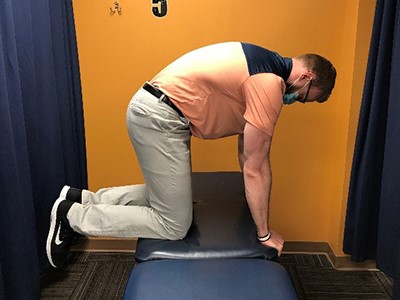
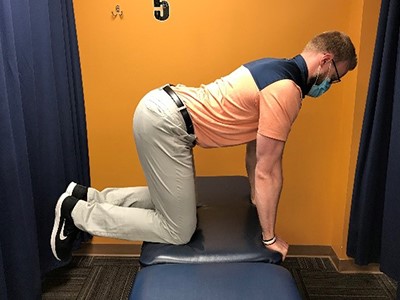
Bridges
A bridge is performed when someone is lying on their back, with both knees bent and feet fairly close to the bottom. The exercise is performed by thrusting their hips upwards until they can no longer move them higher. The goal is to feel the glutes contracting and propelling the movement. Glutes play a very vital role in keeping the lumbar spine healthy.
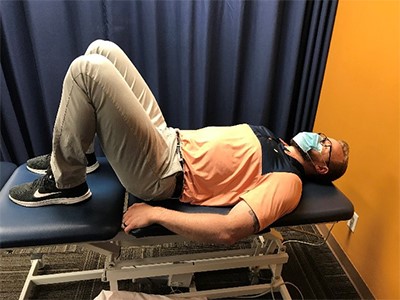
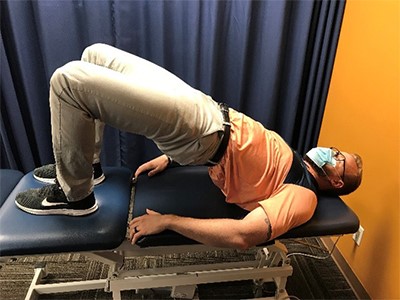
Plank Variations
These exercises are a bit harder to perform and carry a risk for increasing acute pain due to the intensity of the core contraction. This activity is not the best route for everyone, but it is one that individuals with back pain can try to perform eventually as the benefits can be tremendous. Below are pictures that demonstrate the movements. The important thing is to feel your core/abdominals contracting and feeling the intensity of the movement, not your low back.
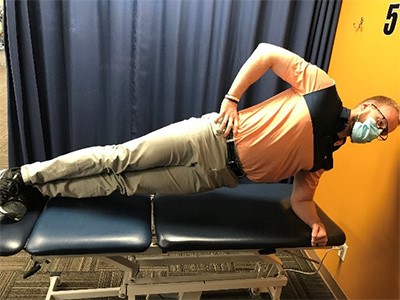
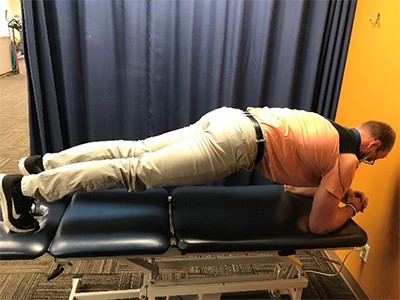
2. Eat More Protein
The role of nutrition is essential for wound and tissue healing.5 To heal any tissue damage that could cause pain, it is in your best interest to fuel that tissue repair as well as you can. Proteins are building blocks of these tissues, carbohydrates help fuel the energy required for this process, and fats provide the fatty acid structures to help repair the cell membrane. If you have back pain, and you know of a clear cause that started the pain, it is a good idea to increase the amount of protein that you are consuming to help repair tissue that has been damaged. Depending on the intensity of activity that you perform from the previous section, the extra protein will help fuel the growth (hypertrophy) of the targeted muscles.
3. View the Glass as Half Full
Pain is a multi-factorial experience unique to the individual.6 How one experiences pain depends upon multiple factors and environmental circumstances, meaning that no one will experience pain like you do. With that in mind, research has investigated how optimism can play a role in the pain experience.7 Having a positive mindset, and a general sense of optimism that you will get better, goes a long way in helping decrease the experience of pain and limitations it can have on your life and activity levels. Knowing that the pain will get better and that not all pain is dangerous, an individual can steadily increase their activity to help improve the experience of back pain.
Physical Therapy Can Help
Information in this blog is a beneficial, research-backed way to help manage your back pain and get you on the road to recovery. Having the power and proper resources to self-manage your pain is a valuable tool throughout life. If you notice that your back pain is persisting, and nothing you do seems to alter your pain, reach out to your local Athletico and schedule a Free Assessment today. Free Assessments are available in-clinic and virtually through our Telehealth platform.
The Athletico blog is an educational resource written by Athletico employees. Athletico bloggers are licensed professionals who abide by the code of ethics outlined by their respective professional associations. The content published in blog posts represents the opinion of the individual author based on their expertise and experience. The content provided in this blog is for informational purposes only, does not constitute medical advice and should not be relied on for making personal health decisions.
References:
1. Casser HR, Seddigh S, Rauschmann M. Acute Lumbar Back Pain. Dtsch Arztebl Int. 2016;113(13):223-234. doi:10.3238/arztebl.2016.0223
2. https://medlineplus.gov/ency/article/003188.htm
3. Schoenfeld, B., Fisher, J., Grgic, J., Haun, C., Helms, E., Phillips, S., Steele, J., & Vigotsky, A. (2021). Resistance Training Recommendations to Maximize Muscle Hypertrophy in an Athletic Population: Position Stand of the IUSCA. International Journal of Strength and Conditioning, 1(1). https://doi.org/10.47206/ijsc.v1i1.81
4. Spiering BA, Mujika I, Sharp MA, Foulis SA. Maintaining Physical Performance: The Minimal Dose of Exercise Needed to Preserve Endurance and Strength Over Time. J Strength Cond Res. 2021;35(5):1449-1458. doi:10.1519/JSC.0000000000003964
5. Demling RH. Nutrition, anabolism, and the wound healing process: an overview. Eplasty. 2009;9:e9.
6. Fillingim RB. Individual differences in pain: understanding the mosaic that makes pain personal. Pain. 2017;158 Suppl 1(Suppl 1):S11-S18. doi:10.1097/j.pain.0000000000000775
7. Goodin BR, Bulls HW. Optimism and the experience of pain: benefits of seeing the glass as half full. Curr Pain Headache Rep. 2013;17(5):329. doi:10.1007/s11916-013-0329-8
